Ever wonder who’s the winner in the popular juicing vs smoothie debate?
I have certainly heard a lot of buzz lately about juicing yet my daughter-in-law swears by smoothies.
While I haven’t wandered through the local mall since before this pandemic began I do recall seeing juice bars pop up recently.
I have heard that both are good for you in some ways and not so good in other ways.
So what is the truth?
I am always concerned about ensuring we eat a well-balanced diet, I got thinking about whether juicing or smoothies should become a part of our meal plan.
The added concern of sometimes having our type 1 diabetic grandson with us makes gaining that knowledge even more essential.
Naturally, if he sees us having a juice or smoothie he may also want one.
Which is better for him?
So let’s begin by learning…
Table of Contents
What is juicing?
Juicing is the process of extracting the water and nutrients from the fibrous portion of the fruit or vegetable. To do this you would require an actual juicer. No big deal as you can easily purchase one almost anywhere these days. Juicing allows you to consume highly concentrated amounts of vitamins and minerals without consuming the filling fibre. This can be good at times and not so good at times.
Juicing Pros
Juicing is perfect for those people who really have a hard time getting enough fruits and vegetables in their diet.
I mean some people really don’t like fruits and vegetables and can go days without consuming either.
These people are seriously risking their health by not consuming the vital nutrients their bodies need for optimal health.
Juicing would be the perfect way for them to get the nutrients they need.
Sometimes when we are sick or not feeling well having juice is the better option. It can deliver maximum nutrients without filling up an already upset stomach.
Mixing green juice with a green apple and a bit of ginger or cinnamon can disguise the taste of those essential vegetable nutrients.
Keep in mind that with juicing those nutrients are highly concentrated you really only need a little but it won’t be very filling because you are not consuming any fibre.
Juicing Cons
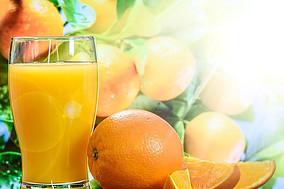 We know that juicing removes the fibre but did you know that we also need a certain amount of fibre to keep things functioning properly.
We know that juicing removes the fibre but did you know that we also need a certain amount of fibre to keep things functioning properly.
Our gut health is dependent on fibre as well as nutrients.
Eating fibre is what gets things moving through our intestinal tract so a lack of fibre can cause constipation.
Another potential problem with juicing is the high sugar content of fruits and some vegetables like beets and carrots.
This high sugar content can cause blood sugar spikes.
When juices contain more fruits than veggies they can contain far more carbs than you realize so be mindful of the amount of juice you are drinking.
If you are eating whole vegetables and fruit with your meals you likely only need a small amount of juice.
What are smoothies?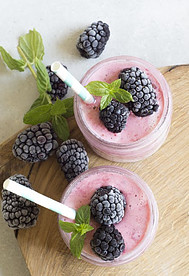
Smoothies are typically made by blending whole fruits and veggies with liquid.
This means you will be consuming a rather filling thick liquid that contains both the nutrients and the fibre.
Smoothie Pros
Smoothies essentially keep all nutrients from your fruit and veggies intact because you blend the whole fruit or vegetable.
This means you can add extra nutritional boosters.
For example, you could add some greek yogurt if you wanted more protein. Again these nutrients are highly concentrated so a little goes a long way.
You can also add additional healthy fat such as nuts and seeds.
Because of this ability to add extra nutritional boosters, smoothies can be an excellent meal replacement.
Smoothie Cons
It is too easy to consume too many servings of fruits and vegetables if you only make a smoothie with produce.
This would lead to consuming much more calories than you can burn especially if that smoothie accompanies a meal.
An example would be having a smoothie with a bowl of oatmeal for breakfast.
A smoothie should actually be the meal, that’s it, just the smoothie.
When I make a smoothie I am cautious about the amount of produce I use, I also add water to help blend it and if it needs thickening ice cubes tend to work quite well when added in the blender.
I also have a smoothie for breakfast on a busy morning.
For diabetics
When it comes to juicing vs smoothies for diabetics there are several things to consider.
Juicing removes the pulp so you would in fact be consuming highly concentrated nutrients.
While this sounds great you need to be cautious if you are using fruits in your juice.
Fruits and some vegetables (beets and carrots) contain high levels of sugar and without the fibre to help slow the digestion process can cause significant blood glucose spikes.
On the other hand, if you choose a smoothie you will also be consuming the fibre. Fibre is essential to diabetics because it slows the digestion process helping to control blood glucose levels more easily.
Again watch your portion control.
So what do we do for our type 1 diabetic grandson, juice or smoothie?
The short answer would be both, depending on the situation.
Let me explain.
When Alex’s blood sugars are too low he requires some fast-acting sugar to start raising those levels back to within the target range set by his doctors. We have found that a small bit of fruit juice works very well in these situations and when we test his blood sugar again 15 minutes later the levels are rising. This helps us avoid any serious hypoglycemic events.
There are other times when Alex may have a cold or flu and just doesn’t feel like eating. Rather than force him to eat when he really doesn’t want to we have found giving him a smoothie made with vegetables and a small bit of fruit as a meal replacement works well. He gets the nutrition he needs to aid recovery from his illness in a form that is easy on the stomach. Plus he is also getting the fibre which will help slow digestion reducing the risk of blood sugar spikes.
Alex never has either juice or a smoothie as a drink with a meal.
As I mentioned juice is used as a high sugar snack for treating lows and smoothies are used as a meal replacement when he is sick which thankfully isn’t often.
Smoothie recipes
We all have our favourite recipes and these are a few of mine. I usually have these for breakfast and find them quite satisfying and don’t require a snack before lunch.
Strawberry Smoothie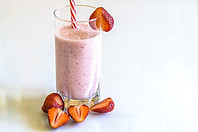
I love strawberries and usually pick an abundance at the local Upick farm. They freeze easily for use in the winter which I find fabulous. I have also used wild strawberries that I pick in my own backyard.
1 cup strawberries (frozen or fresh)
1/2 cup water
ice
Blend in a blender add ice or water to create the consistency you like.
Peach Rasberry Smoothie
This is so refreshing and I just love it all year long. I pick up peaches at the local farmers’ market and slice and freeze them for use year-round.
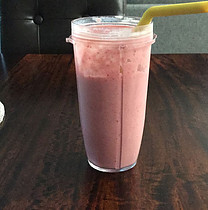
6 oz. plain fat-free yogurt
1 medium peach, sliced
1/2 cup raspberries
1/4 tsp vanilla extract
ice
Blend in a blender and add more ice or water to create the consistency you like.
Peanut Butter Banana Smoothie
I loved peanut butter banana sandwiches as a kid and this actually reminds me of those carefree days. Great start to the day.
1 frozen banana 1/2 tsp vanilla extract
2 Tbsp peanut butter 1/2 cup water
1 Tbsp ground flax seeds ice
Blend in a blender and add more ice or water to create the consistency you desire.
Final thoughts
When it comes to juicing vs smoothie it really is quite a personal decision.
Both are healthy but both have some features that can be problematic.
When juicing you are removing the water and nutrients from fruit and vegetables creating a highly concentrated source of nutrients.
This can be beneficial in certain situations such as your diet doesn’t offer adequate nutrition, or you are ill and unable to eat a variety of foods.
Keep in mind that juice made from fruit and some veggies (beets and carrots) is very high in sugar.
Another thing to consider is the fact that juice is not filling so you will want food, limit your juice with food to 4 – 6 ounces.
Without the fibre, this can create high blood glucose spikes which can be dangerous for diabetics.
Smoothies blend the intact fruit or veggie meaning you will also consume the necessary fibre.
This can slow digestion preventing that blood glucose spike.
Smoothies are much more filling than juice because of the fibre content.
This means smoothies should be used as a meal replacement rather than a drink with a meal.

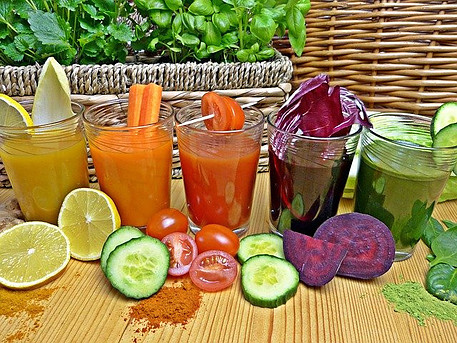
That’s what I thought, that diabetics better not eat fruit, or at least not much. I might have missed it, but it’s not quite clear to me what your end conclusion is, do you give Alex juice or a smoothie?
Also for a non-diabetic it’s better not to drink to much juice because of the sugar. Even though that are natural sugars.
Tom and I drink about 15ml juice a day, mango or peach for him and pineapple for me. And 2 times a week my breakfast is a green smoothie. Just the smoothie. No oatmeal for me, yikes 🙂
I have more vegetables in the smoothie than fruit, as well as some superfood powders and coconut milk. And – lucky me – Tom always makes it! He blends it not too much, so there is always a bit chewing involved.
Your recipes sound delicious as well, Deb! Thanks for the inspiration.
Thanks for commenting Hannie. I agree you are lucky that Tom makes your smoothies for you. It sounds like you guys are on track. You are eating healthy and keeping an eye on your portion sizes which also important.
Thanks for pointing out that I wasn’t clear enough in what our decisions were regarding Alex. When his blood sugars are low he requires fast-acting sugar snacks to bring his blood sugars back within the target range. We find that a small bit of apple juice does the trick nicely and when we check again after 15 minutes his sugars are rising.
There are times that he has a cold or flu and just doesn’t feel like eating. At those times we give him a smoothie made mainly with vegetables and some fruit. Since this is in place of a meal the fibre is essential to slow digestion and help prevent blood sugar spikes.
I hope this helps clarify things for you.
Thanks again for mentioning I wasn’t clear enough in the article, I will certainly make the necessary corrections to my article.
Ah, I get it, Deb. Yes, it clarifies it for me.
Information is always a balance, isn’t it. Sometimes it’s a bit too little, other times it’s so much people loose track. I always have a hard time to make it right. 🙂
So happy I was able to clarify that for you, Hannie.
Again, I thank you for pointing out that I needed to edit that article and be more clear.
Take care.
Deborah,
I have to admit, I tried juicing for a few months and while the juices tasted good, I hated throwing away the remnants of the pulp. I found that overall, I was consuming way too many fruits and vegetables when I juiced.
I recall when I went to the store for the first time and bought the items I needed to juice for a week. My entire fridge was full to the brim of veggies and fruits. While I made sure to make the juice mainly veggies versus fruits (hubby didn’t like my juices) it was still very, very expensive to consume what we did in a week. In Alaska, fresh produce is very costly and frozen is the better way to go. However, frozen, when juiced, tends to turn to mush and doesn’t work so well.
To this day, I love smoothies over juicing. I think consuming the entire fruit or vegetable is not only better for my health, but also my budget. I’m not throwing away mass quantities of pulp.
But, at least I tried the juicing to have an opinion on it. If I lived back in Hawaii where things just grew on trees, then the juicing might have worked better. But up here, not so much. I believe it cost us about $950 for the week. This was breakfast and lunch for only 2 people. Dinner was a healthy variety of veggies. Way too expensive!
Thanks for the information!
Katrina
Thanks for commenting Katrina.
Wow, $950 for a week for two people really is not sustainable. I admire you for trying it though.
Personally, we use smoothies more often than not for the simple fact that I also believe in eating the fibre as well. We use them for a meal replacement, usually for breakfast.
I strongly believe our bodies need fibre.
When someone goes to the doctor with digestive problems (constipation) the first thing the doctor usually asks is “Are you eating enough fibre”?
That in itself tells me we need it. There are clearly times when juice can be beneficial but in small amounts and I certainly don’t recommend blowing the budget to do so.
Thanks for sharing your thoughts. Take care.
Hello Deborah,
Its a very insightful review about juicing and smoothie! To be honest I did not realize until now the differences between these 2 beverages. I did made the blunder of taking smoothie with a meal:/ .
Now I know the difference and when to drink it for optimal health benefits. Moreover its very cool from your side for sharing some recipes with us:)
Do you have a smoothie recipe that can provide some ‘fuel’ for a 10km run ? (in fact I am a Trail runner)
Keep up the great work!
Cheers:)
Hi Arno, wow.
A trail runner, I love that you are so ambitious with your running. Have you run any marathons or half-marathons? It is a goal of mine to run a half marathon once COVID is over with. We do have some trails near our home but because we have had bears roaming I have avoided them.
I don’t have a lot of experience with nutrition for runners but I do have some ideas.
First of all, I believe a runner would require a smoothie or some sort of nutritional snack to aid muscle recovery.
Based on that assumption, I would take 1 cup unsweetened almond milk, 1 banana, 3/4 cup blueberries, 3/4 cup blackberries, 1/2 cup greek plain greek yogurt and if you want extra protein then add 1 scoop of your favourite protein powder. Blend it all up and if too thick add water, if too thin add ice cubes.
Another idea would be a few handfuls of spinach or kale, 1 cup milk of your choice, 1 kiwi, 1 banana, 1 Tbsp ground flaxseed and a few ice cubes. Blend well and add water if too thick or more ice if too thin.
While I am not a nutritionist I do hope this helps and gives you somewhere to start. You may be able to find more recipes online, I find great recipes on Pinterest.
Thanks for dropping by and take care.
Deborah,
Your article was incredibly detailed! I enjoyed learning about the difference between juicing and smoothies and the health benefits of each.
I had never considered juicing as a way to get needed nutrients from fruits or vegetables I may not like. What a great way to disguise the taste with some yummy ingredients AND give your body what it needs!
On the other hand, I wasn’t aware that juicing can take away needed fiber from your diet, whereas smoothies do not. Smoothies for the win!
I also appreciated the smoothie recipes you provided. I can’t wait to try some of them!
Thanks,
Femi
Hi Femi, thanks for dropping by.
I am happy I was able to help you learn about juicing and smoothies.
There are times, such as during illness, when juicing is best. But generally, smoothies win in my opinion because of the fibre content.
I hope you enjoy the recipes as much as we do.
Take care.